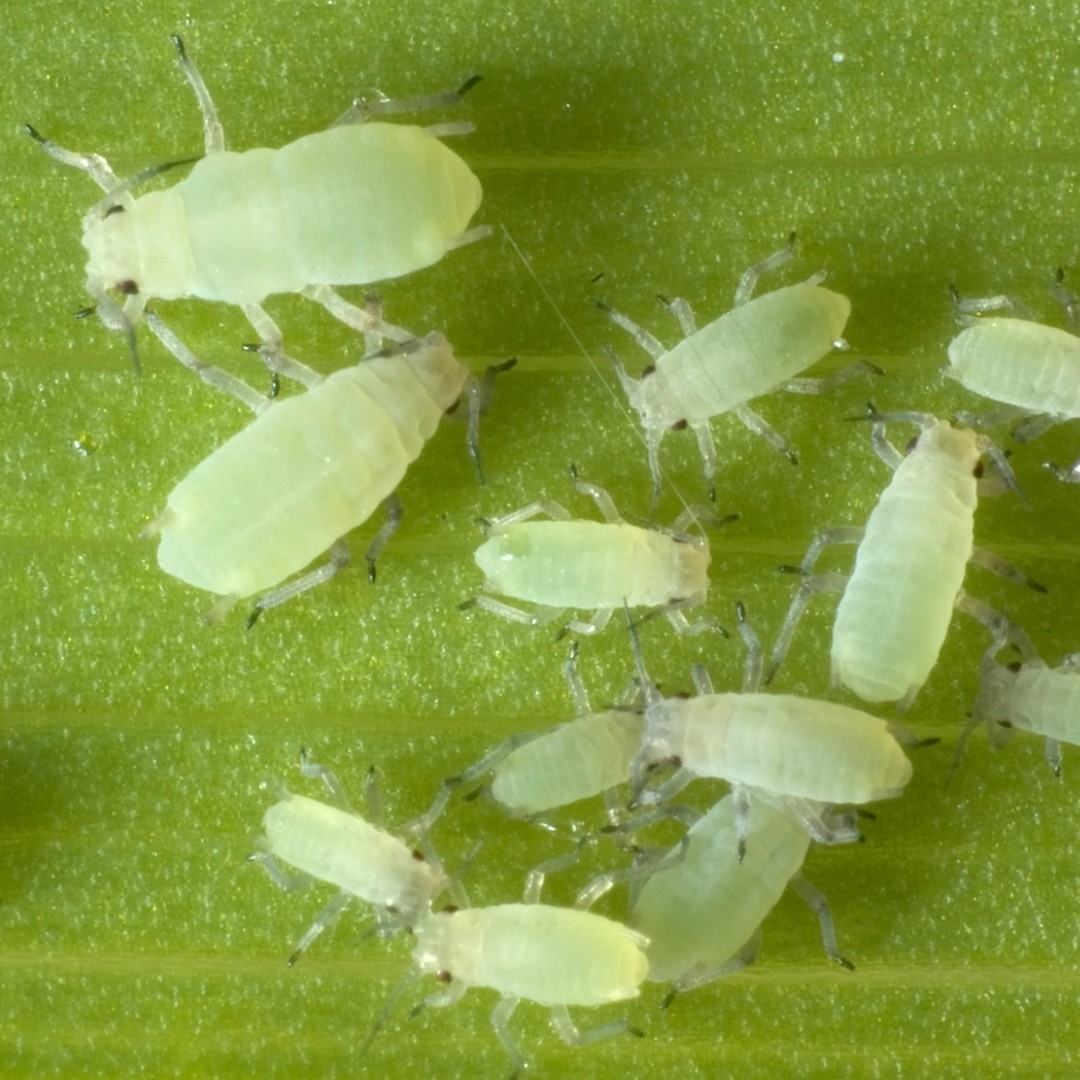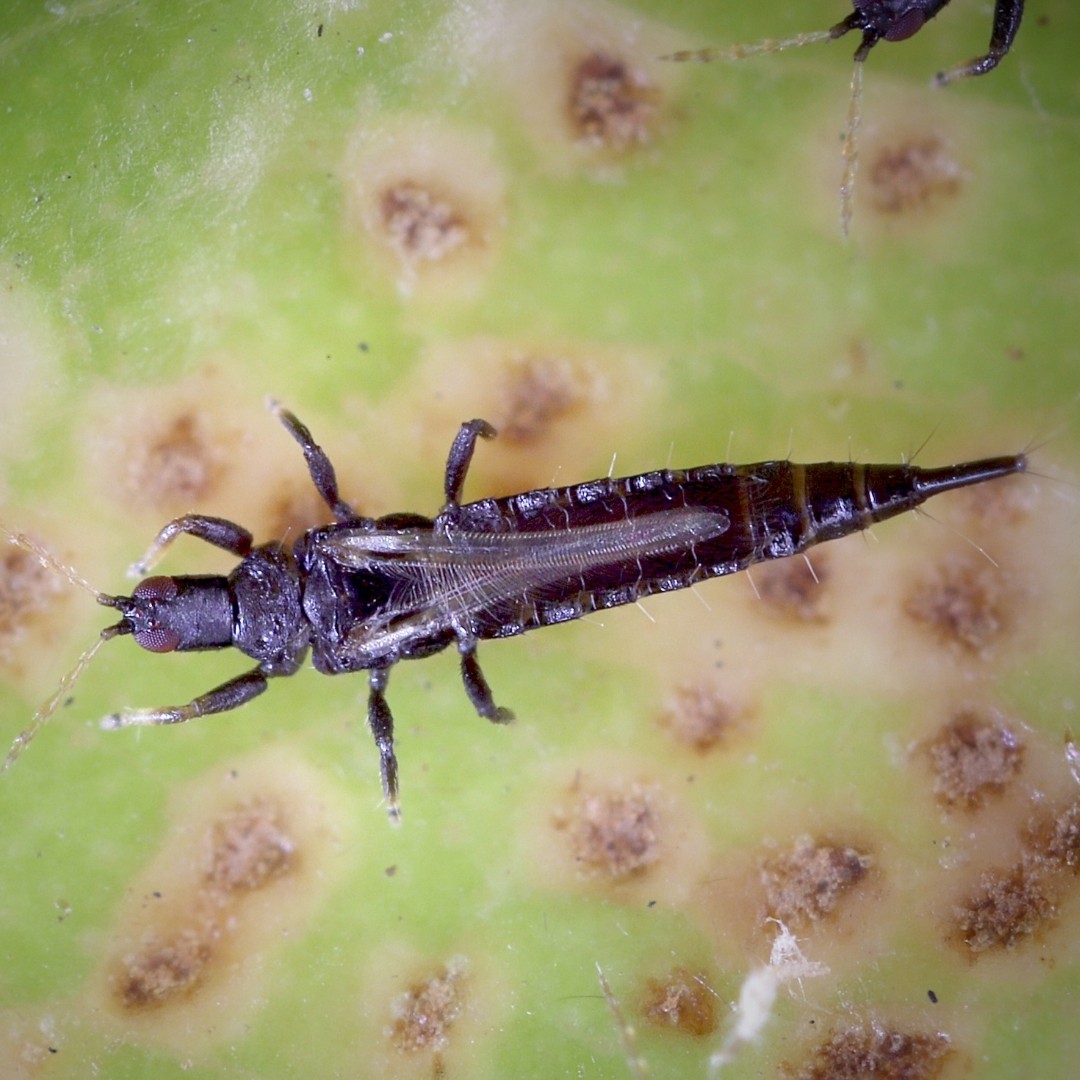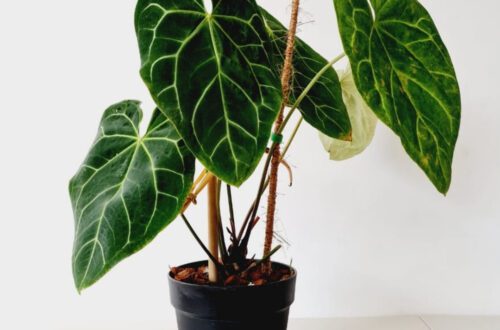
How I Treat My Plants For Fungus Gnats -Step By Step Guide
Welcome to my guide on how I get rid of fungus gnats. This is the process I use to get rid of fungus gnats and to prevent them. I use leca on top of the soil, which I don’t see a lot of other people doing, but I find it makes it difficult for gnats to lay eggs (they love moist soil). Plus I use yellow stickers to control the adult population and hydrogen peroxide solution to control the larvae and eggs in the soil…
The key to treating fungus gnats is multiple attacks at the same time, and repeat every 5 days until you break the lifecycle:
- Attack the adults (with yellow stickers)
- Attack the eggs (with hydrogen peroxide)
- Make it difficult to lay eggs (by covering the soil with leca).
Then repeat this every 5 days until victory! It should be in about 2 weeks.
What’s So Bad About Fungus Gnats??
They are a nuisance, but on top of that the real problem is that larvae can eat small shoots and roots under the soil, so they can be detrimental to new growth, especially in young cuttings. You don’t need to worry too much about them but it’s a good idea to get rid of them…
The Fungus Gnat Life Cycle
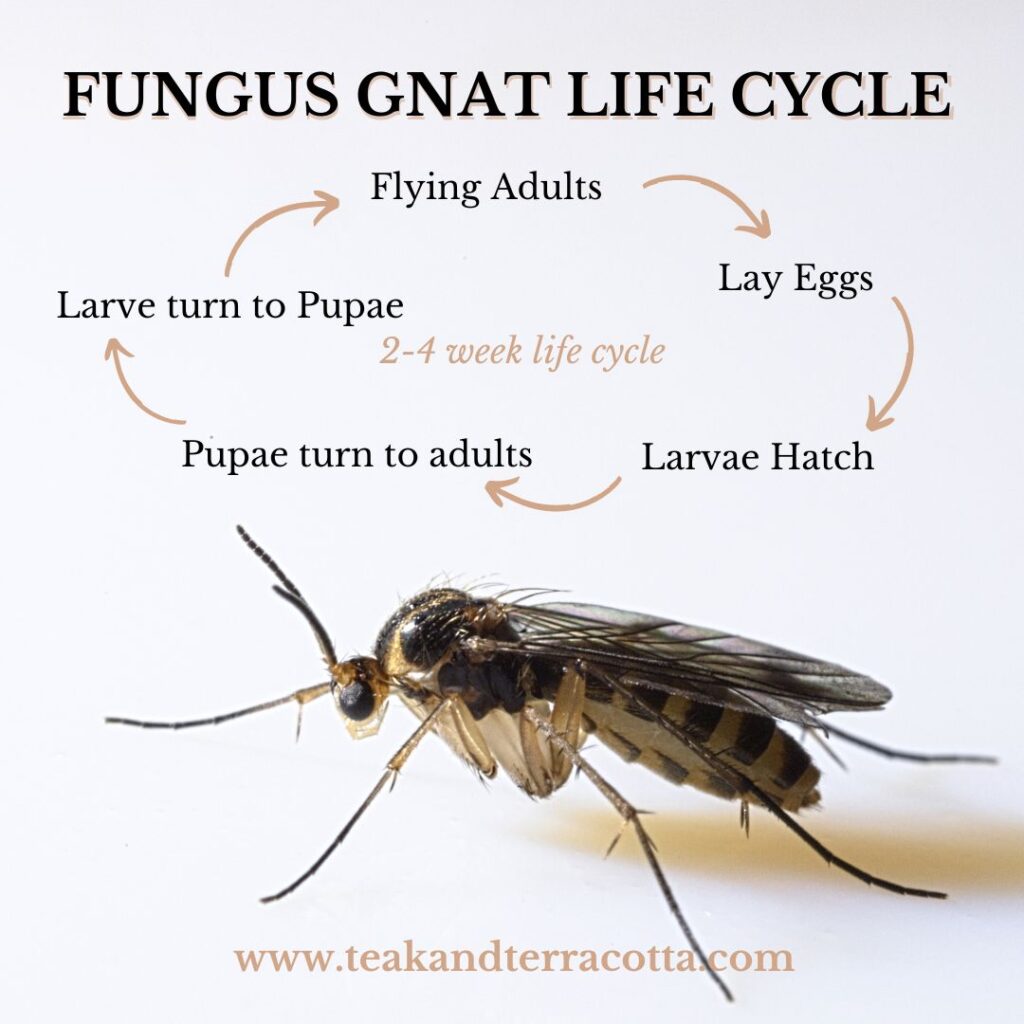
How To Get Rid Of Fungus Gnats
Fungus gnats are tricky to get rid of as they lay eggs in the soil. These eggs hatch and then you get a lot more. If you kill the adults you still have eggs hatching and if you kill the eggs you still have adults laying more eggs. You can’t kill all the adults anyway as they fly, there are always some left over to lay more eggs. So you are up against it! But fear not, the process is really easy..
So what you need to do is multiple attacks at the same time, killing the eggs and killing as many of the adults as you can, whilst making it difficult for any remaining gnats to lay eggs. And then you want to repeat the process multiple times over the length of the lifecycle until they are finally all killed off.
The 3 things I do simultaneously are:
- Kill the eggs in the soil with a hydrogen peroxide solution.
- Use yellow stickers close to the soil to kill as many of the adults as possible and make it difficult to lay eggs.
- Add clay pebbles or leca to the top of the soil to make it even more difficult to get to the soil and lay eggs.
Any one of these ‘attacks’ on their own won’t stop the problem, you need to do them all at the same time to really slow down the fungus gnat lifecycle. The good news is that the adults only live for one or two weeks, so as long as you keep at it you should be free of them within two weeks.
It’s important to do all infected plants at the same time, and even non-infected plants that are near by, in case they have eggs in them.
Then 5 days later I repeat the process: I replace the yellow stickers and treat the the soil with more hydrogen peroxide solution to kill more eggs. Replacing the yellow stickers is a great idea as you can see if you’re winning the battle by how many land on the stickers. Hopefully you are getting less and less each time.
Keep doing this every 5 days until you get no more gnats landing on the stickers.
I go into more detail below, step by step with pictures, but first just a quick note on how to prevent them coming back…
How To Prevent Fungus Gnats
Ongoing I put some yellow stickers around my plants so I can see if the gnats come back. The stickers are fairly ugly, so I hide them in or behind bigger plants but close to the soil. I check them at watering time and if they start to get some gnats stuck to them I treat the plants again with hydrogen peroxide solution to get on top of the problem early.
Fungus gnats love moist soil to lay eggs in, so covering the soil in leca can help to deter them.
How To Kill Fungus Gnats Step By Step:
What You Will Need:
- Yellow stickers
- Leca / clay pebbles
- Hydrogen peroxide solution
- Water
- A re-usable ketchup/sauce bottle
Make The Hydrogen Peroxide Solution
Buy a 3% hydrogen peroxide solution.
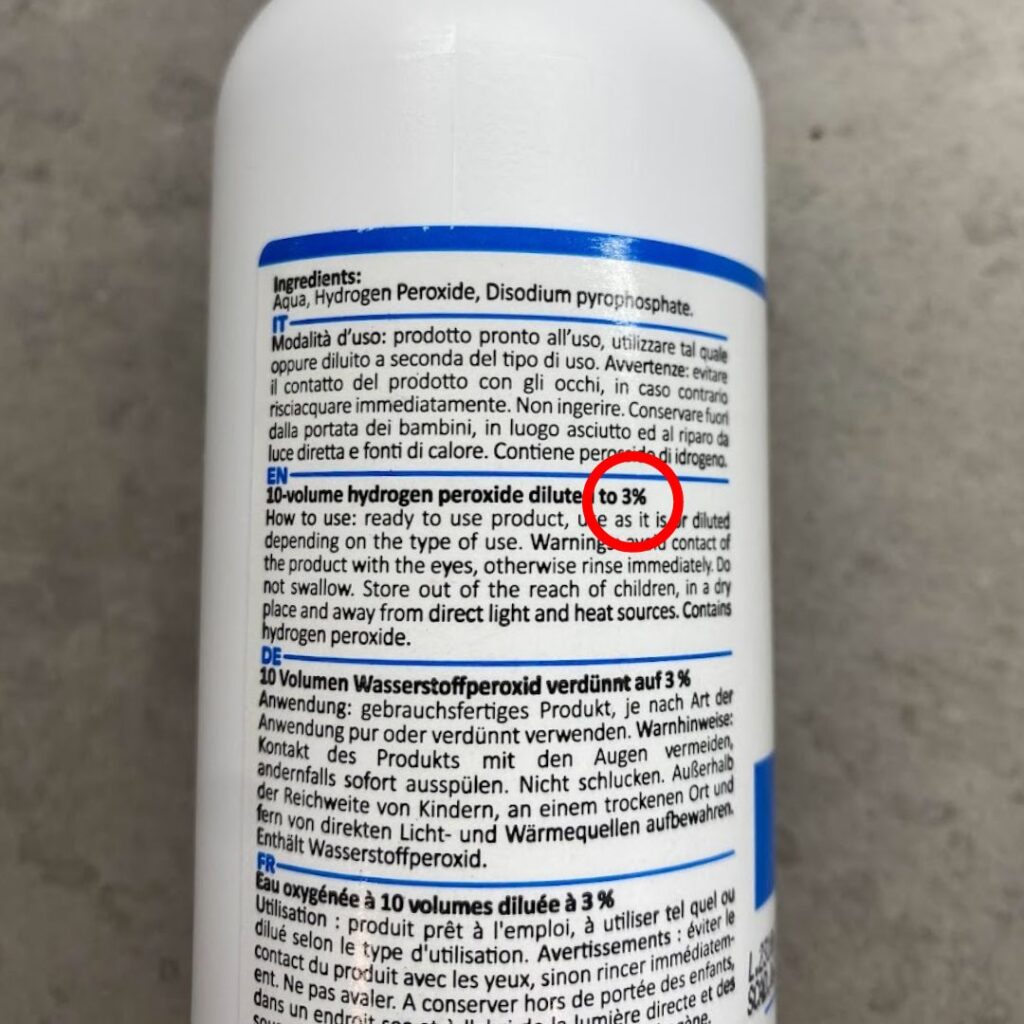
Then mix it with water (I use filtered tap water). You want to mix it 1 part of the hydrogen peroxide solution to 4 parts water. (Make sure it is 3% hydrogen peroxide or these amounts won’t work and you could damage your plants).
I use a measuring jug and add 100ml hydrogen peroxide solution to it, then I add in 400ml water to bring it to 500ml total, as you can see below.
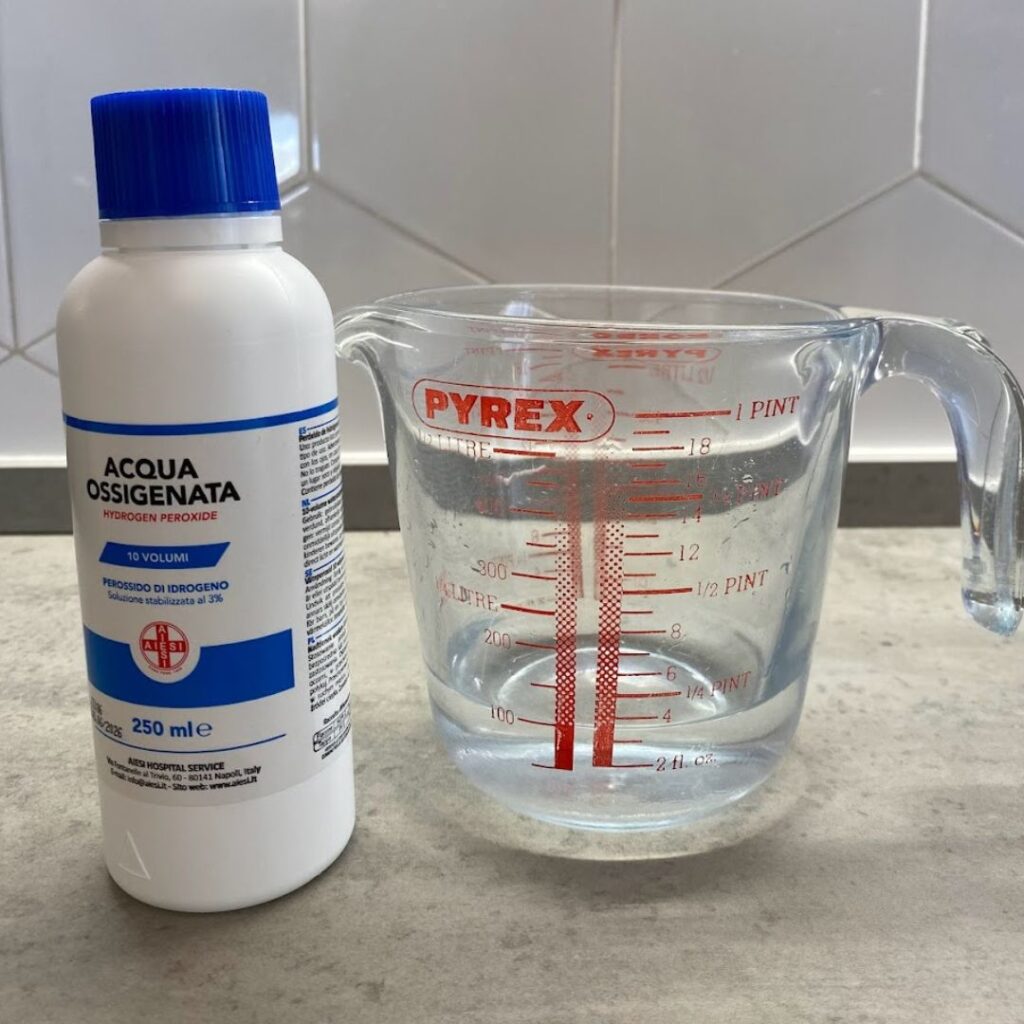
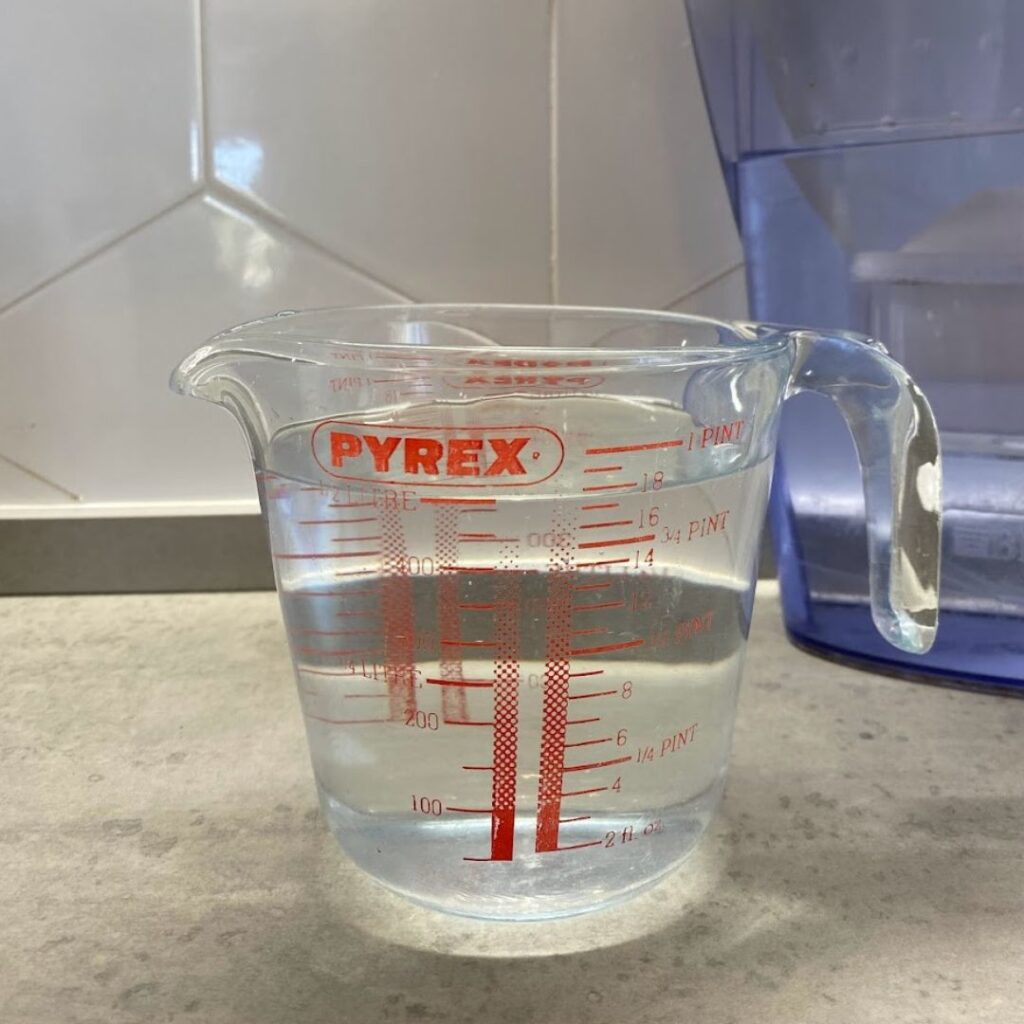
Treat The Plant With The Solution
Add it to a sauce / ketchup bottle for easy dispensing. There’s a picture of mine below (it has markings on the side as I sometimes mix the solution in it.
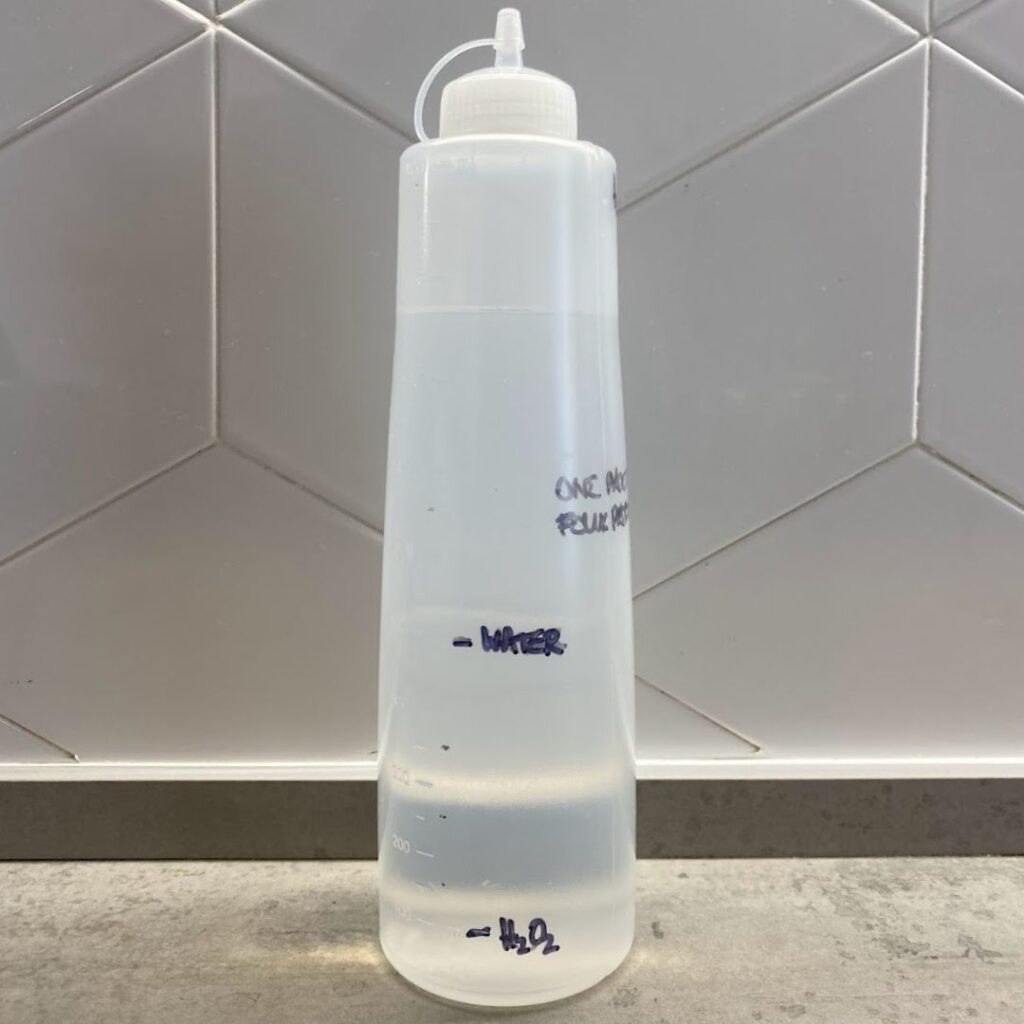
Apply the solution to the entire surface area of the plant, you want to kill all the larvae/eggs.
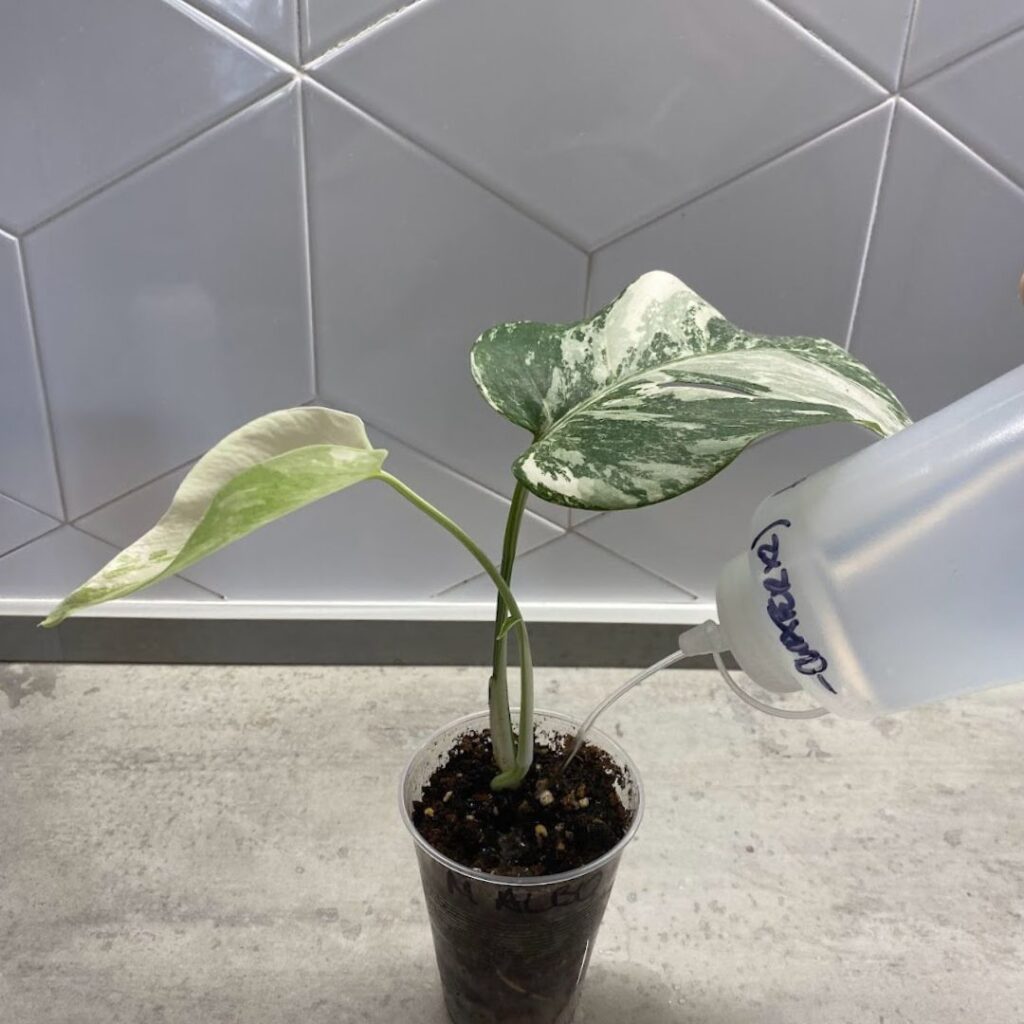
It is normal for the solution to fizz slightly on top of the soil.
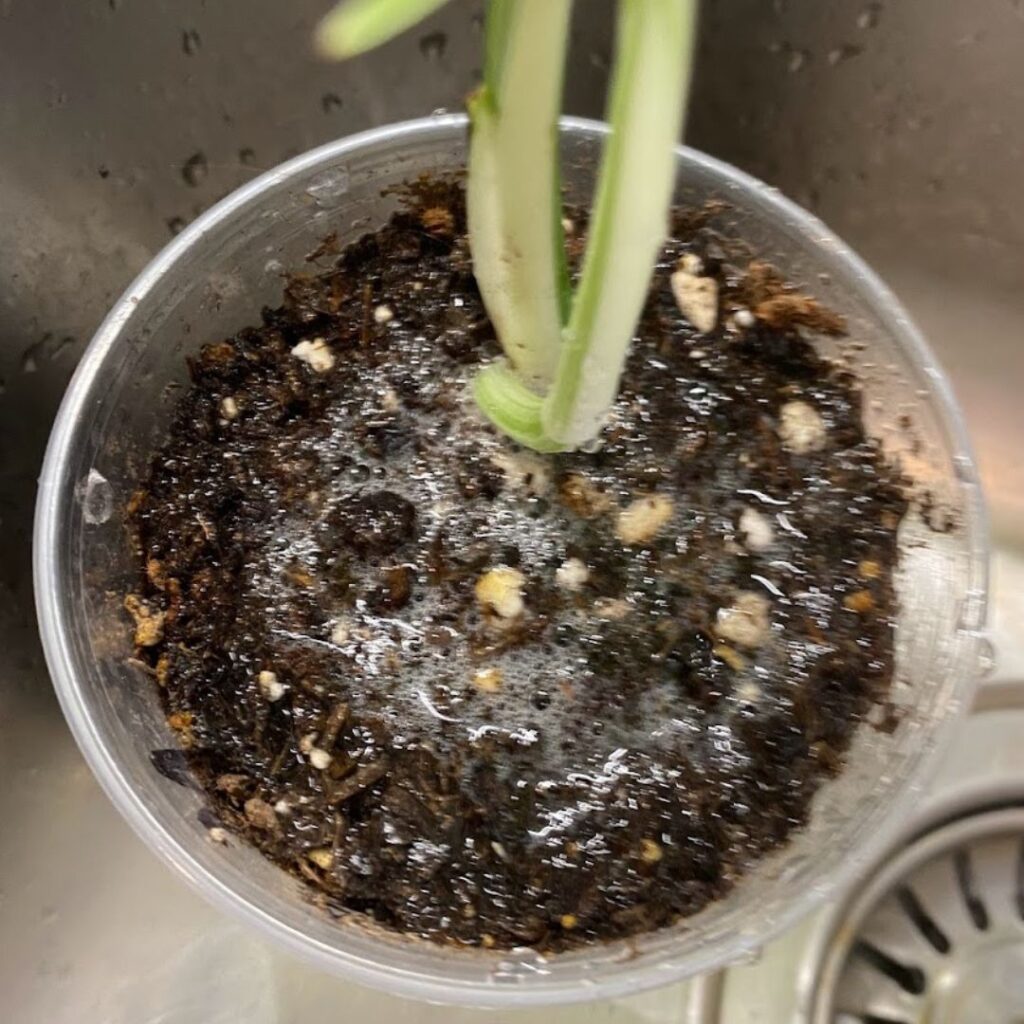
Cover The Surface Of The Soil In Clay Pebbles
Get some clay pebbles (or ‘leca’), and cover the surface of the soil. This will make it more difficult for the gnats to lay eggs.
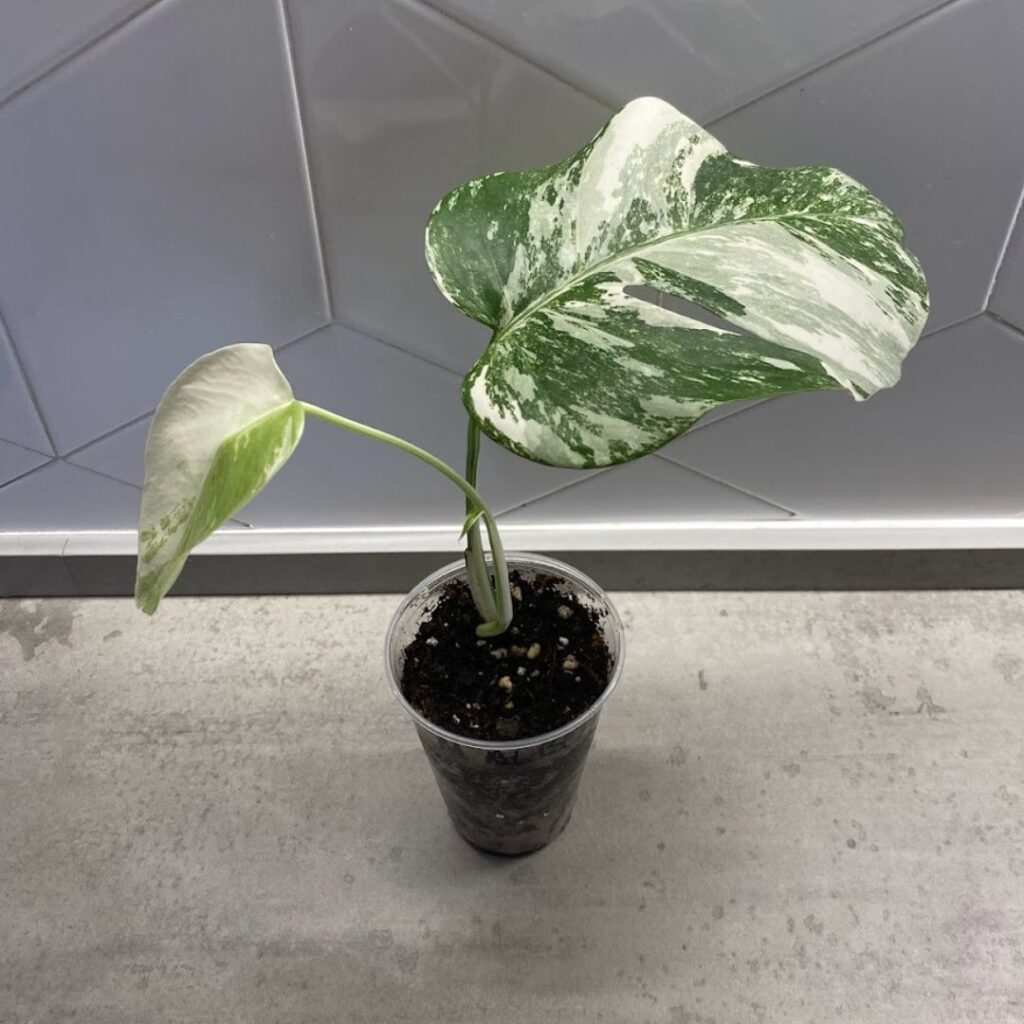
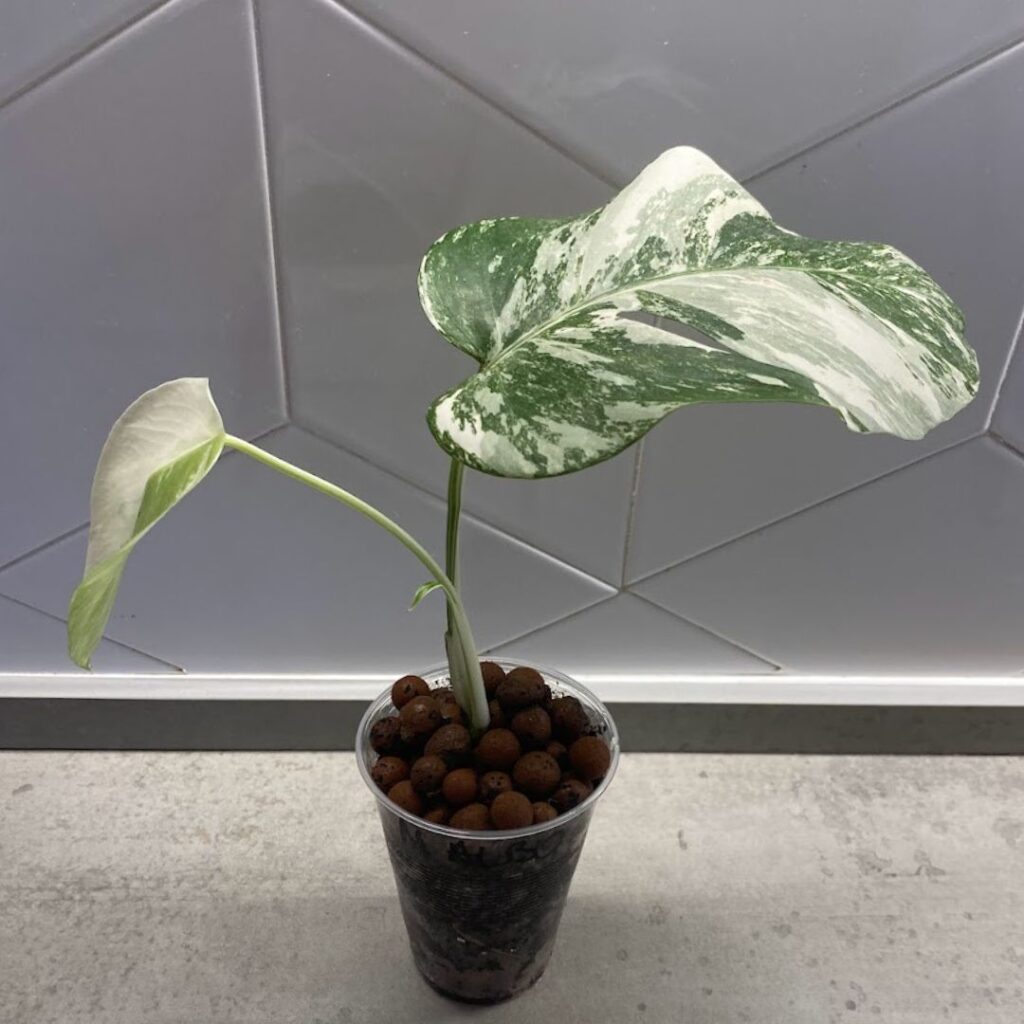
Add Yellow Stickers Close To The Soil Surface
Yellow attracts the adults and they stick to it, which helps to control the adult population.
You can buy small pre-cut stickers, or you can get larger sheets and cut them to size yourself.
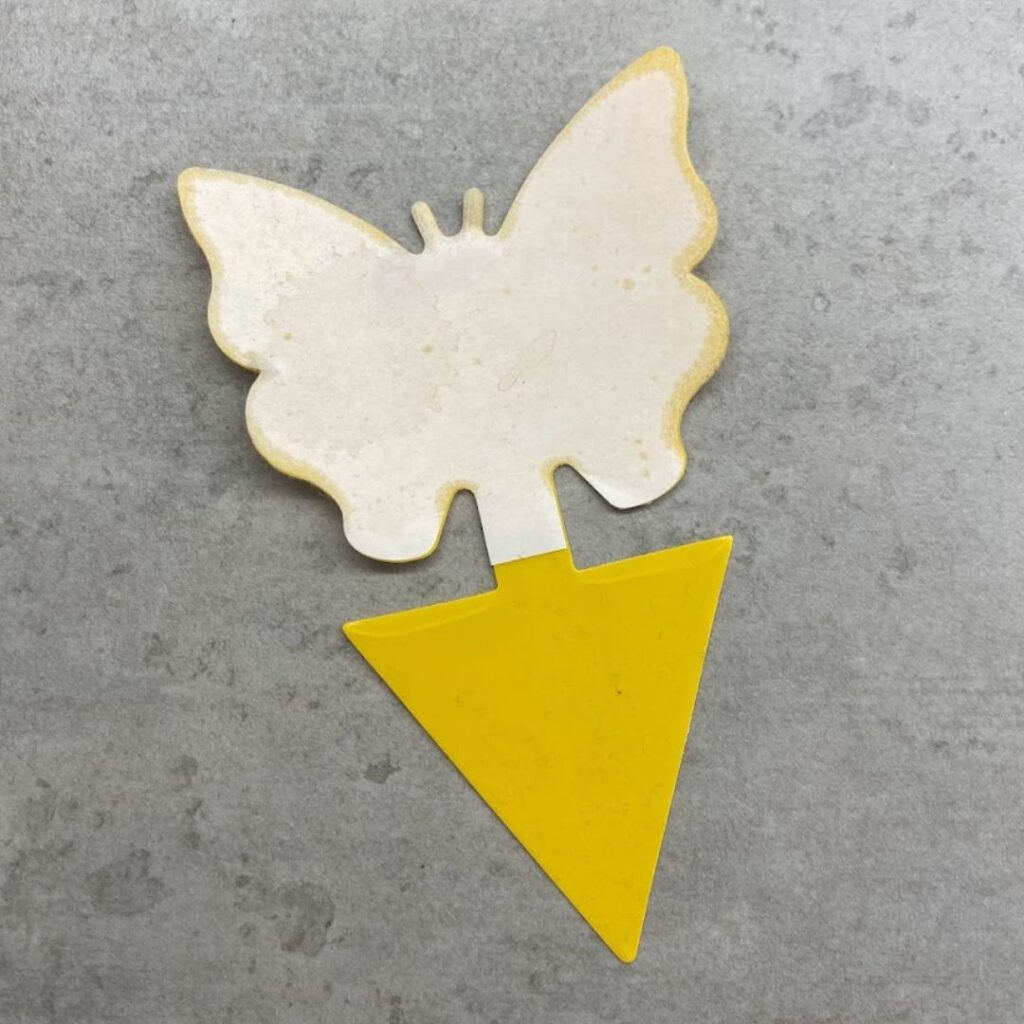
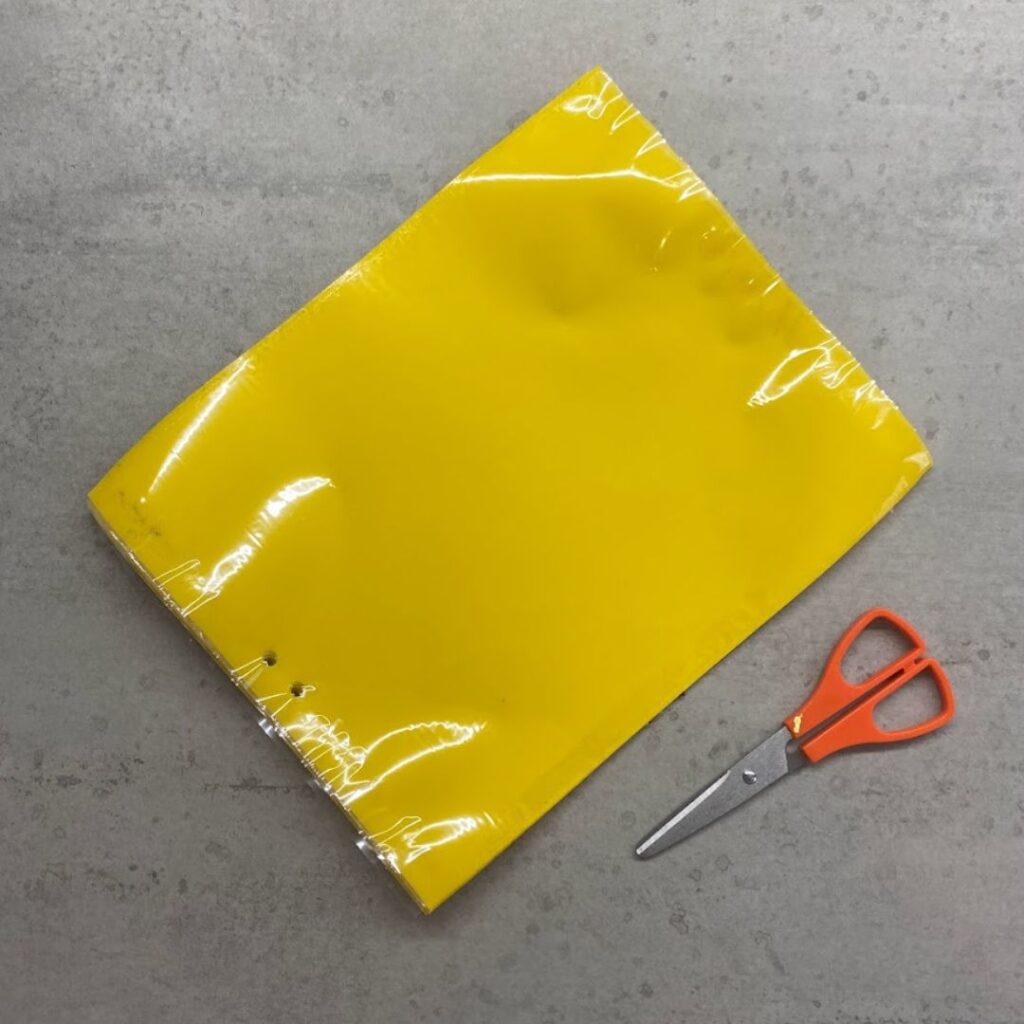
I like the smaller pre-cut ones for individual plants. For my bigger propagation boxes I use the bigger ones, cut up.
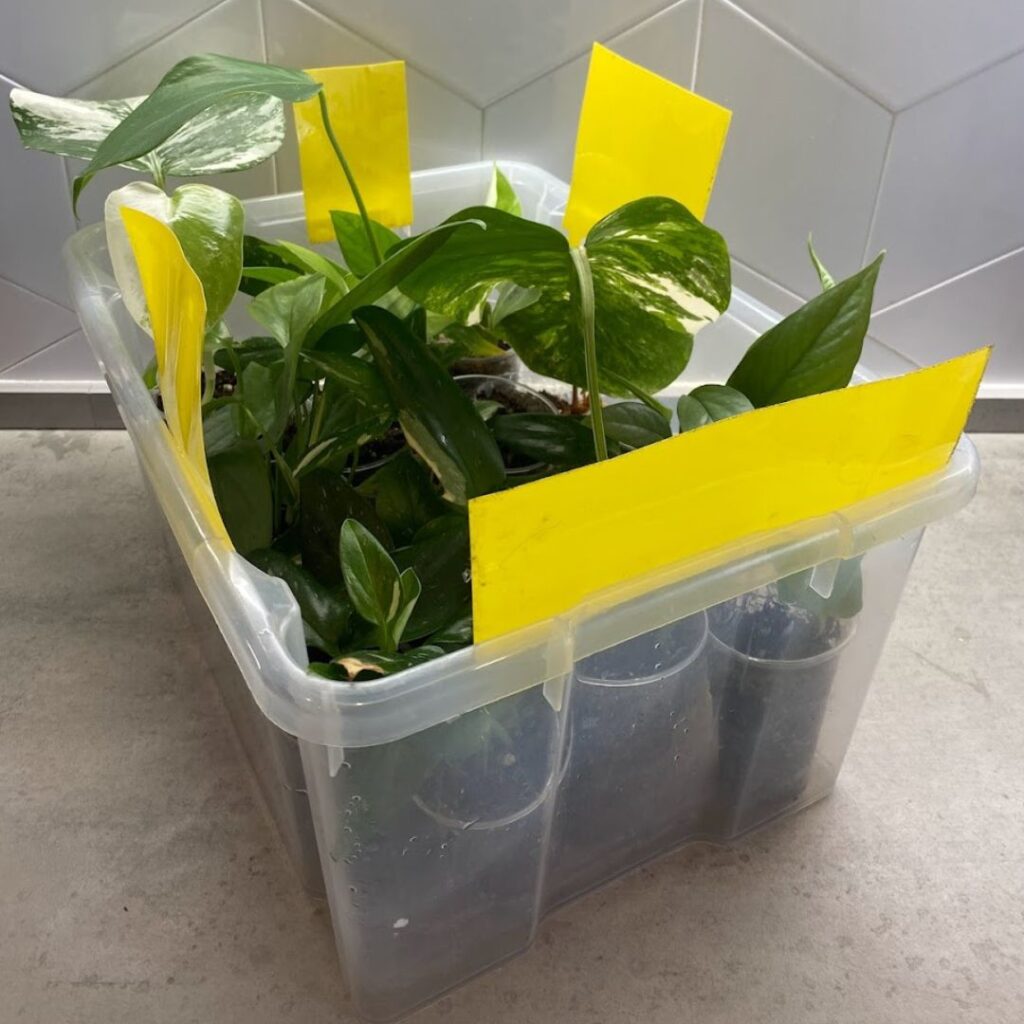
Repeat Every 5 Days
The plant should now look like this:
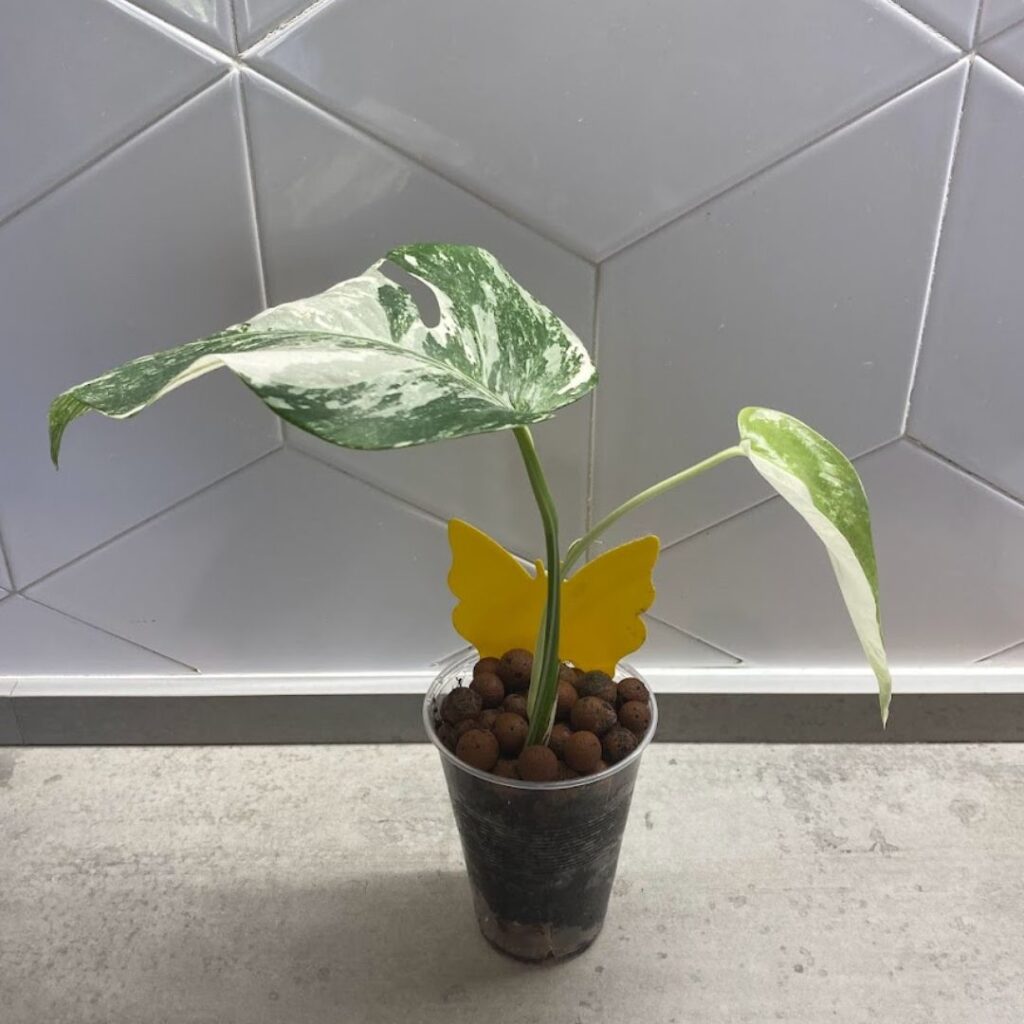
After 5 days treat the plant again and change the yellow sticker. It might look like this:
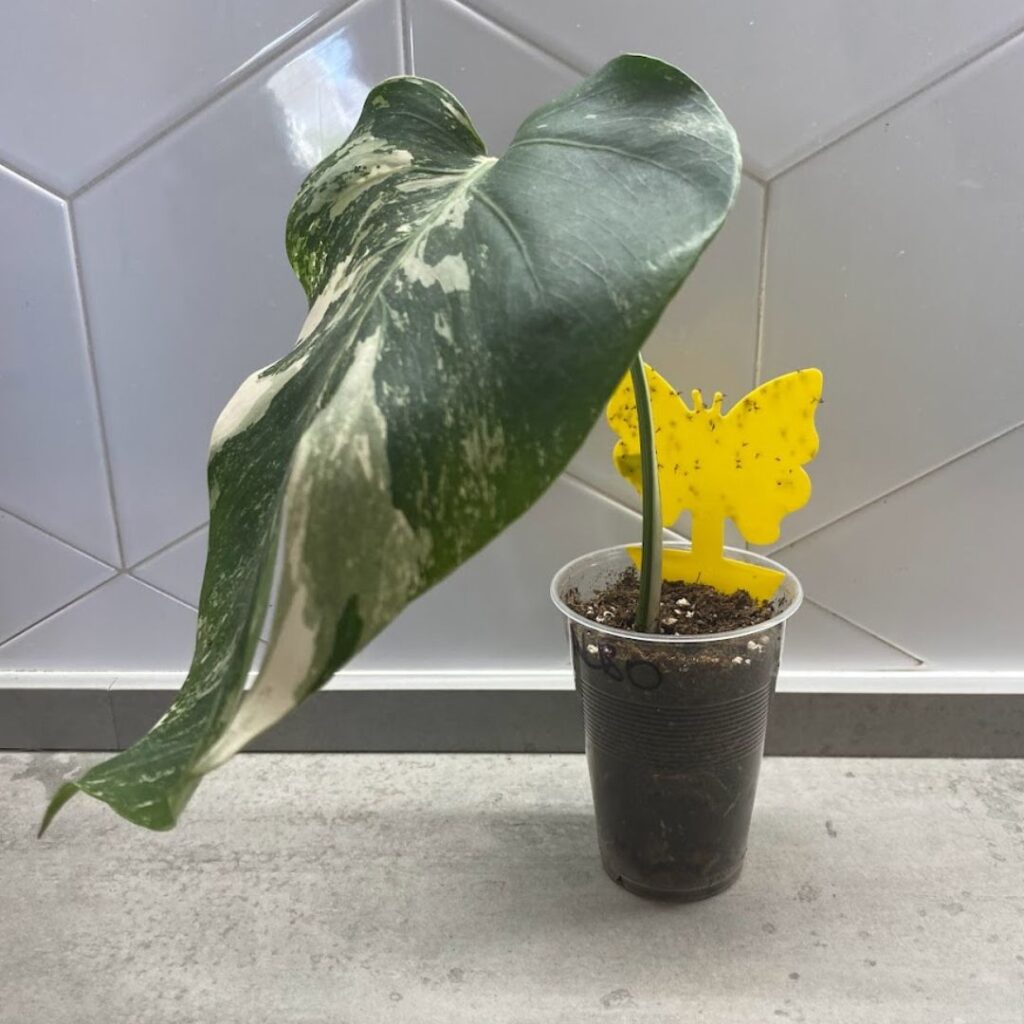
Repeat this process every 5 days until you get no more gnats on the yellow stickers. You don’t need to remove the clay pebbles, you can put the hydrogen peroxide on the them and then change the yellow sticker. Do this for all plants nearby too.
Ongoing you want to keep the leca on top of the plant and the yellow stickers in the soil – you don’t need the stickers on every plant, just here and there so you can keep an eye on the situation. If you see gnats on them, then take action as per the steps above.
Fungus Gnats – Frequently Asked Questions
Are Fungus Gnats Harmful?
Fungus gnats are not harmful to humans, they just eat new plant growth and can hold back the development of new plants.
What Causes Fungus Gnats In The Home?
Fungus gnats thrive in moist soil, so a home with a lot of plants and moist soil, will be a great place for them to thrive unfortunately.
Where Do Fungus Gnats Come From?
They come into the home on other plants (in the soil) or they fly in. They can come in on compost or potting mixes too sometimes.
Do Fungus Gnats Bite?
They do not bite humans.
What Kills Fungus Gnats Naturally?
You can keep the soil dry and cover it in pebbles or leca so that the gnats don’t have anywhere to lay eggs. The best way to get rid of them is killing the eggs with hydrogen peroxide, it’s not that natural, but that’s the best way to be honest!
Can Fungus Gnats Lay Eggs In Water?
No, they lay eggs in moist soil or rotting compost.
How Do You Find The Source Of Fungus Gnats?
Put yellow stickers in each plant, and the one with the most gnats on it after a day is the culprit!
Other Articles You Might Like
Hope you found this useful you might also like our other articles: Best Soil For Syngonium Plants, Philodendron Soil.
Please follow us on Instagram and Pinterest for regular plant updates and occasional plant giveaways.
How I Treat My Plants For Fungus Gnats -Step By Step Guide


